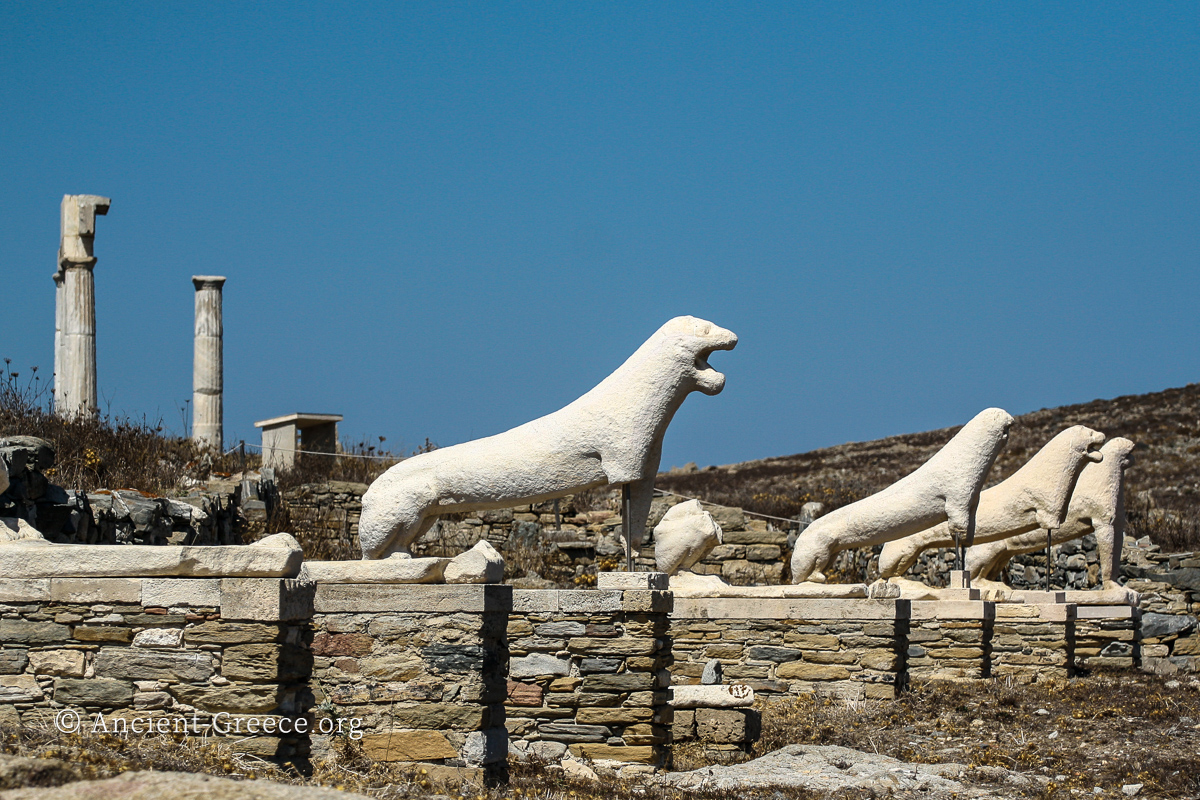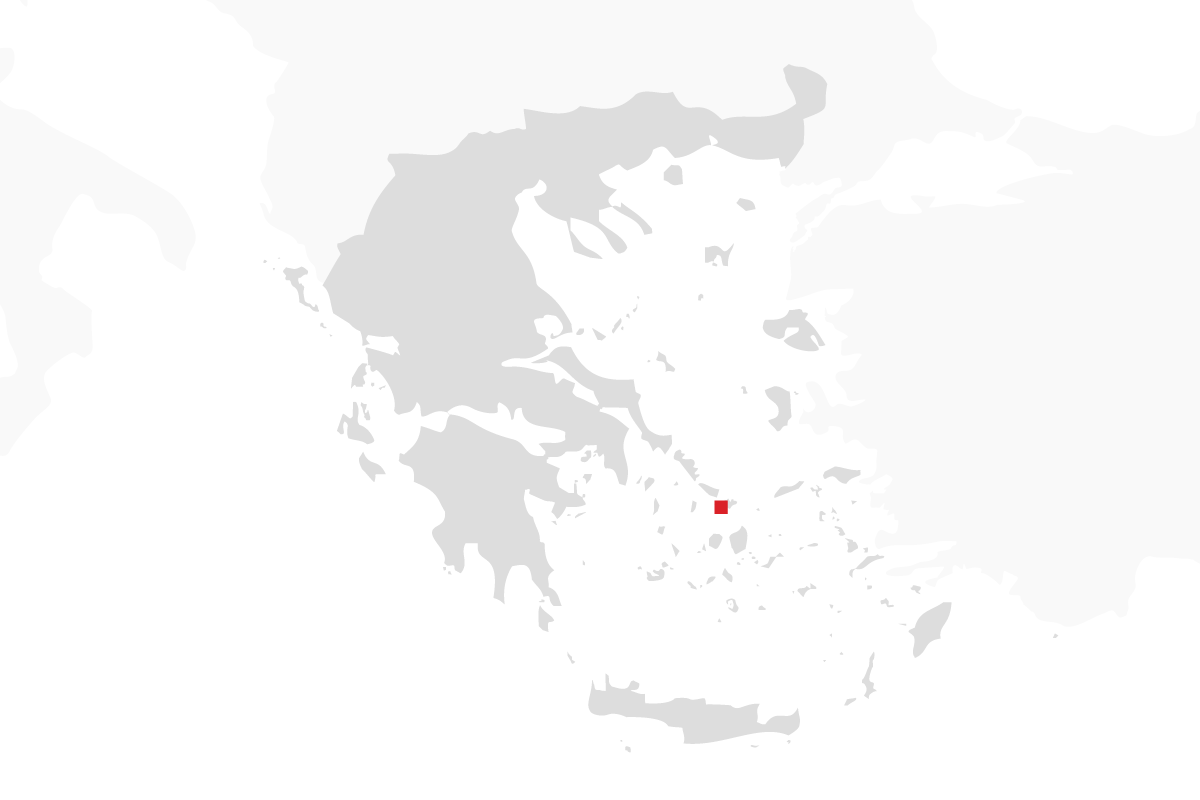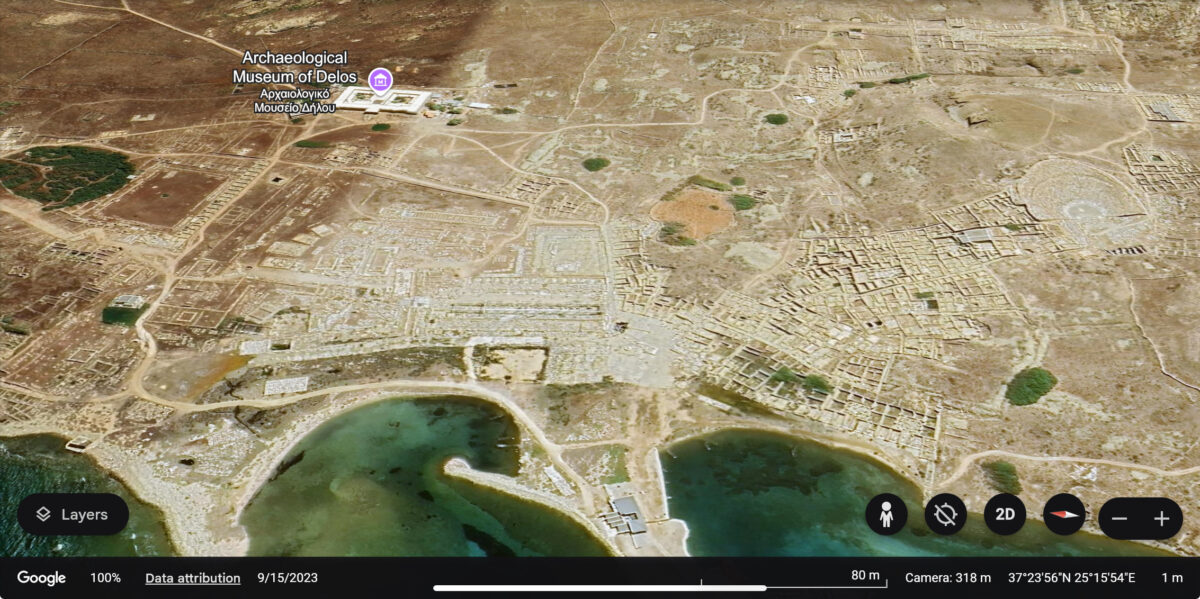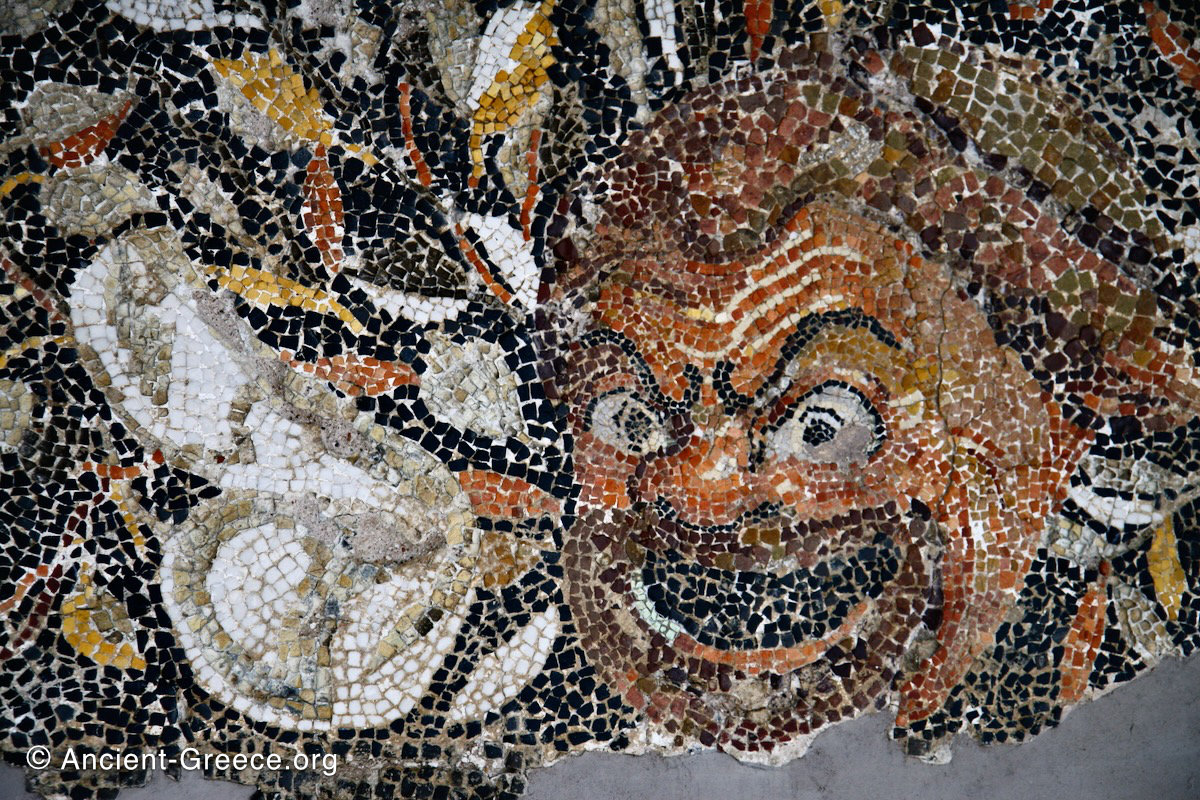
On this page:
Delos (Δήλος) island, through its claim as the birthplace of Apollo was one of the most sacred places of ancient Greece, and through its central location in the Aegean Sea, was also one of the most robust trading centers of antiquity. This central location allowed seafarers to meet it in the middle of their journey as they sailed from the major commercial centers of the Aegean like Athens, Miletos, Corinth, Macedonia, Thassos, Samos, Milos, Rhodes, and Crete, to name a few. Its importance also made it coveted by the most powerful maritime powers that strove for control of its harbors and sanctuary.
Today, Delos is an uninhabited island with an archaeological site and a museum–a popular day trip by boat from the nearby island of Mykonos.
A Brief History of Delos
There is evidence of habitation in the island that dates back to 3000 BCE, and of elevated importance during the Mycenaean period (1580-1200 BCE). Its reputation as a sacred island began attracting large numbers of devotees, and along with them trade flourished, transforming Delos into a robust commercial port for almost a thousand years after the 8th c. BCE.
Its claim as the birthplace of Apollo gave Delos a strong religious identity that lasted all the way until Byzantine times. In an era when religious festivals were economic engines, attracting thousands of pilgrims and generating healthy economic growth, Delos stood strong at the center of the wealthiest commercial centers and benefited greatly.
Despite being wind-swept and almost barren of vegetation, it had several features that made it conducive to habitation (probably reached 25000 inhabitants by the early 1st century BCE). The island’s several harbors and position in the middle of the Cyclades put it on the map of every sailor of antiquity, and the island also had an excellent supply of water from two sources: flowing all year in the small river Poppins and trapped in a layer of limestone that covers a layer of granite below.
Its small size (about 5 x 1.3 km) however made the island vulnerable and easy pray for several powerful maritime powers through the centuries. Naxos and Paros attempted to establish control of Delos early in Archaic period, but it was the Athenians that dominated the island on and off for almost five hundred years. The Athenians initiated two “purifications” of the island. The first one in 540 BCE decreed that all burials within sight of the temple of Apollo be removed, while the second purification in 426/5 BCE removed all burials, and forbade births and deaths on the island. After the Persian wars, starting in 478 BCE, Delos hosted the treasury of the Delian League before its subsequent relocation to the Athenian Acropolis–much to the displeasure of many alliance members.
By the end of the 4th century the Hellenic kingdom of Macedonia became the island’s protector, and the Delian population doubled with many citizens of other cities settling on the island to take advantage of its position as a strong commercial center. But even after the Roman conquest of Greece, the Athenians dominated the island once again and promptly removed all Delians, replacing them with poor Athenians who received pastures on the island by lot. The island continued to enjoy wealth and fame, which led its population to increase.
Over the centuries, Delos was truly a cosmopolitan center with a diverse population which included people from all around the Mediterranean, but in 88 BCE the Romans razed the island during their war with Mithridates (an ally of the Athenians who controlled the island), a calamity Delos never recovered from. Away from the limelight for several centuries, its population dwindled and by the 3d century CE only a small Christian community called it home. Subsequently, Delos was plundered several times in the 8th and 9th centuries. During Ottoman occupation (15th-19th c. BCE) the nearly deserted island became a pirate stronghold, and the ancient stones were quarried by the nearby islanders for their own construction needs.
The French School of Archaeology began excavating Delos in 1873. Today Delos is an archaeological site reachable by boat from Mykonos. A small museum among the ruins shelters and exhibits some of the important objects unearthed during the ongoing excavations.
Terrace of the Lions
The statues of the lions were dedicated to the sanctuary of Apollo at the end of the 7th c. or early in the 6th c. BCE. They stood as guardians of the Sacred Lake and the sanctuary. The original number of lions ranges between nine and nineteen. Today, the ones seen at the terrace are replicas replacing original marble ones which are sheltered inside the Archaeological Museum of Delos.
In 1716 one of the lions was taken by Venetians because it reminded them of the lion of Saint Mark. They added a preposterous head to it and installed it in front of the Arsenal in Venice, Italy where it can still be seen today (last photo on the right).
The Koinon of the Poseidon
Left: The koinon of the Poseidon or House of the Poseidoniastai of Beryttos (Berut).
Right: The statue of Aphrodite of Delos (or Aphrodite and Pan) which was found in one of the rooms on the south side of the building.
The statue of Aphrodite was created between 150 and 125 BCE and is on permanent exhibition at the National Archaeological Museum of Athens.
Delos Theatre
The ancient theatre of Delos was built in the 3d century BCE and its spectators had a splendid view of the harbors beyond the orchestra and the Skene. It had a capacity of about 5000 people.
Bottom row: Water management was very important for the ancient Delians so they preserved it and managed it through cisterns and wells. In this photo the large underground cistern that collected rain water near the theatre. Its roof was supported by the eight arches dressed with granite blocks. The theatre quarter of ancient Delos.
Houses and Mosaics
The House of Dionysus with its striking mosaic in the center of its court which depicts the god Dionysus with open wings riding a tiger which wears a necklace of vine and grapes.
The House of Kleopatra: The sumptuous house was owned by an Athenian, Dioskourides and his wife Kleopatra. The statue replicas are of their likeness.
The House of the Trident with its exquisite mosaics;
The House of Masks is a large complex near a large outdoor cistern. Its interior floor is covered by a beautiful mosaic. In its center, a vignette depicts Dionysus riding a tiger–iconography similar to the mosaic found in the House of Dionysos.
Also: the House of Dolphins; the House of Hermes; and the House of the Lake.
The House of the Naxians with the with two surviving fragments of the Colossal Kouros statue, and the statue’s base.
Kynthos Cave
The Kynthos (or Cynthus) cave is mostly a man-made cave in a natural hollow on the rock near the summit of Mt. Cynthus. It is roofed by monumental slabs of granite that form a gabled roof. It had a statue of Heracles in its center and an altar by its entrance.
Temples
Left to right: The Temple of Hera (Heraion) has a cella and pronaos with two columns in antis (Distyle in Antis) on the front facade. It was built around 500 BCE.
The partially restored temple of Isis is located in the Sanctuary of the Egyptian Gods.
The Letoon and what remains of the oldest temple of Apollo (The Poros Temple). It was built by the Athenians in the late 6th c. BCE..
The ruins of the Temple of the Athenians
are between the Temple of the Delians and the Poros temple. It was built of Pentelic marble between 425-420 BCE.
Various Monuments
The Exedra of Dionysus, or Stoibadeion with the characteristic phallic statues–symbols of Dionysiac cult.
The Sacred Way from the south and the Stoa of Philip. 311-166 BCE
The Minoa fountain was built in the 6th c. BCE and it is 4 meters deep. The column in the middle supported the roof and dates to the renovations of 166 BCE.
The Agora of the Italians and other ruins.
Residential Buildings
Left to right: One of the many water wells found in the houses in Delos. Note the deep cuts on the marble which were made by the long use of rope rubbing against it as inhabitants fetched water with a bucket tied at the end of it.
Ancient front door restoration and ancient building walls.





























































